Harlem Nights/U Street Lights
The Kennedy Center
May 10, 2015
Concerts rarely go off without a hitch. There’s usually a moment, or two or three, that leaves you with your head cocked in unexpected disappointment. But Jason Moran and Marc Cary’s “Harlem Nights/ U Street Lights”—which was presented at the Kennedy Center on Sunday, one night after debuting at Harlem’s Apollo Theatre—was like a dream. Over 20 musicians fit together for a seamless and immersive production that celebrated D.C. and New York’s twinned roles in the development of modern Black music.
The production stretched across two stages and three hours, plus about four generations. It started with a free 6 p.m. performance at the Millennium Stage before continuing at 8 with a ticketed show at the Crossroads Club.
Jason Moran, the center’s artistic director for jazz, graced the Millennium Stage in a fitted suit and some very exclusive FEIT Direct white and black color-block footwear, and kicked off the night with “Handful of Keys,” by Fats Waller. Waller first recorded the song in 1929, but Moran put his own flavor on it, making it accessible to the modern ear.
With that Harlem stride still rolling, Moran found a deep groove to vamp on before abandoning his left hand altogether and looping the melody in his right; we waited anxiously for the beat to drop, like we were at a hip-hop show. It was the first of many moments when the audience sat enamored, at the knees of the artist. There was no chatter, no coughs or sneezes—just awe.
It’s only appropriate that a night celebrating Harlem and U Street would be a night to celebrate the range and history of the jazz piano. Bertha Hope, a timeless beauty, floated across the stage and introduced a song written for her by her late husband, fellow hard-bop pianist Elmo Hope. “These are some of my minor moments,” she said about “Minor Bertha.” The driving tune has a funny form that’s agitated but playful; it felt a bit like arguing for the sake of making up. Although it was clear that the 78-year-old Hope has a deep knowledge and command of the piano, she assumed no airs. She opened up to us, playing from a deep place that was raw, imperfect and honest.
A lot of big names doing a big concept at a big venue can breed pretension. Sometimes it turns into a case of egos competing onstage, which can quickly make a jazz show inaccessible. But sincerity was the theme of the hour. Marc Cary, a pianist raised in D.C. who logged over a decade as Abbey Lincoln’s right-hand man, dug deep into Billy Strayhorn’s “Single Petal of a Rose.” While he kept a continuous growl at the lower end of the piano, his right hand was free to skate up the keys in a quick line, reaching even beyond the last key. Cary was so enthralled he nearly fell off the bench.
Pianist Gerald Clayton, meanwhile, paid tribute to the former Kennedy Center artistic director Dr. Billy Taylor—who grew up in D.C. and later participated in legendary stride piano contests in 1940s Harlem—with a soulful, heavily swingin’ rendition of Taylor’s “His Name Was Martin.” Clayton took his time, delicately embellishing the melody with earnestness that grabbed hold of Cary and Moran; they sat on stage, visibly transfixed.

Afro Blue performs with guests Queen Esther, Brianna Thomas and Lakecia Benjamin. Courtesy Jati Lindsay/Kennedy Center
The Millennium Stage portion of the production ended with selections by Howard University’s a cappella group, Afro Blue, featuring guests Queen Esther and Brianna Thomas. Thomas stole the show with her rich tone, sultry vibrato and powerful projection on a slow, pulsating arrangement of Duke Ellington’s “Mood Indigo”.
Those fortunate enough to be holding tickets to the “Miles Davis Meets Go-Go” jam quickly made their way upstairs to the Crossroads Club, a multi-purpose room converted into a kind of nightclub. Immediately, Moran and Cary succeeded in doing the typically implausible: They brought go-go, D.C.’s indigenous soul music, to Georgetown. The crowd was a balanced mix of Rock Creek Park-area residents and music lovers from the innermost parts of the city. The undeniable groove laid down by bassist Ben Williams, percussionist Milton “Go-Go Mickey” Freeman, drummer Kenny “Kwick” Gross and legendary jazz drummer Jimmy Cobb was enough to break down socioeconomic constructs, and bring out the Africa in everyone.
Donvonte McCoy, Brian Settles, Lakecia Benjamin and Bill Saxton made up a tight-knit horn section, while Moran, Cary, Clayton, Hope, and Federico González Peña alternated between piano, synths and Rhodes. In true go-go fashion, Cary alternated between being an emcee, cowbell player and keyboardist. McCoy took up singing duties a few times, getting the crowd rockin’ as one. The energy in the room was so positively charged; some kind of community was being formed within those walls.

Federico Peña and Marc Cary perform at Harlem Nights/U Street Lights. Courtesy Jati Lindsay/Kennedy Center
The band was up there to preserve go-go, partly by giving it a place in the greater lineage of Black music, but without watering it down. “What we are doing is holding up the tradition of musicianship,” Marc Cary told the tightly packed audience. “Jimmy Cobb is playing the pocket; Bertha Hope is on piano playing in all the right places.” It was clear that what we were witnessing might just be a one-time thing: When else would we experience this many artists from all sides of the musical spectrum coming together purely for the funk? And could it ever feel this good again?
There wasn’t a moment of corniness throughout. A go-go version of “It Don’t Mean A Thing (If It Ain’t Got That Swing)” (the “Chuck Brown version,” to many) somehow separated itself from cliché. Roy Hargrove artfully quoted Afrika Bambaataa’s “Planet Rock” and Grandmaster Flash’s “The Message” throughout his solo. Da Originalz, a Beat Ya Feet dance crew, arrived onstage and mesmerized the audience with juke footwork, pop-and-lock, and turf-style muscle isolation.
Watching this group of players come together to create an authentic go-go experience within the walls of the Kennedy Center was nearly astounding, but the audience was too sweaty to be stupefied. Moran summed it up best: “This is historic. When are you going to hear Jimmy Cobb play some go-go again?”

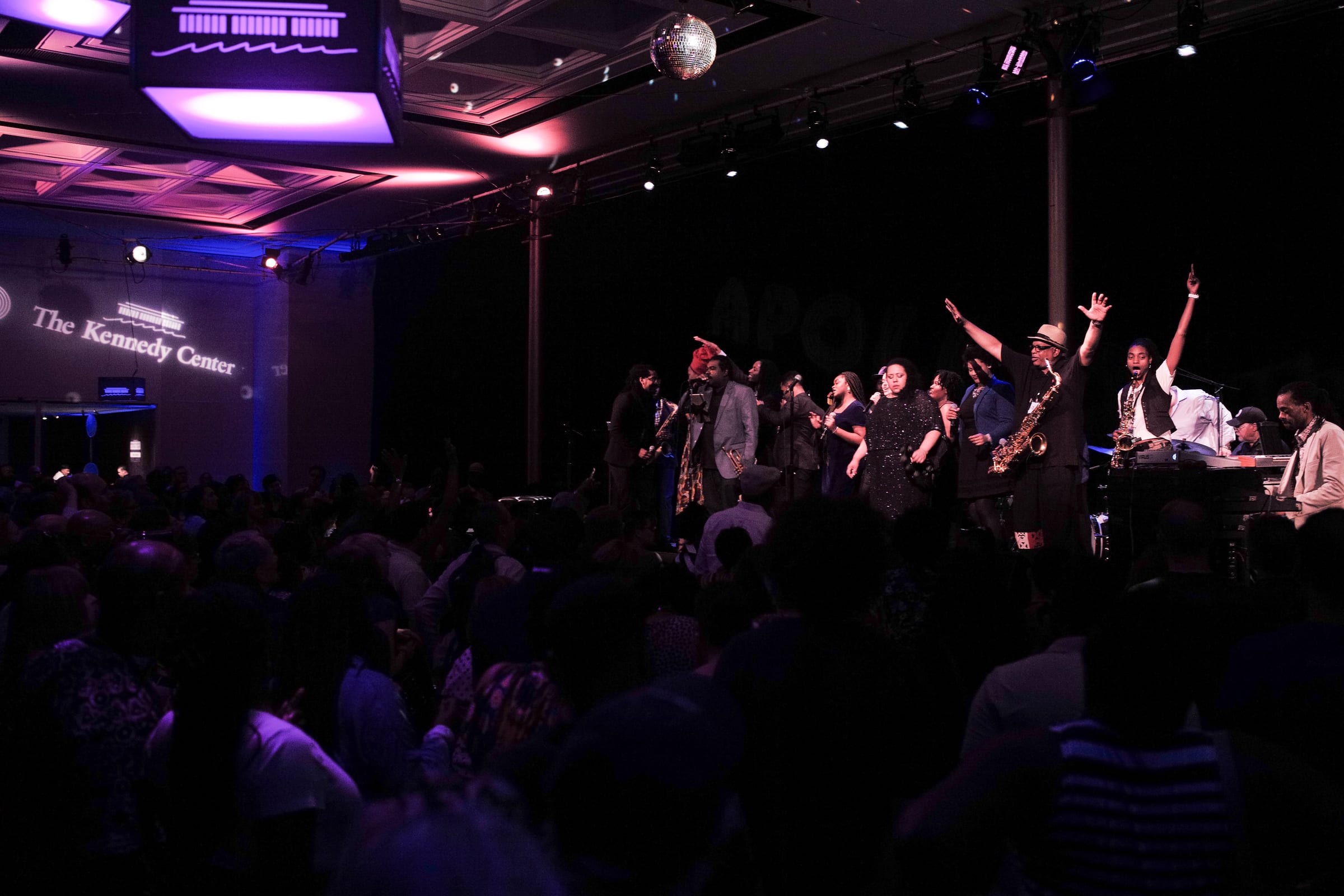
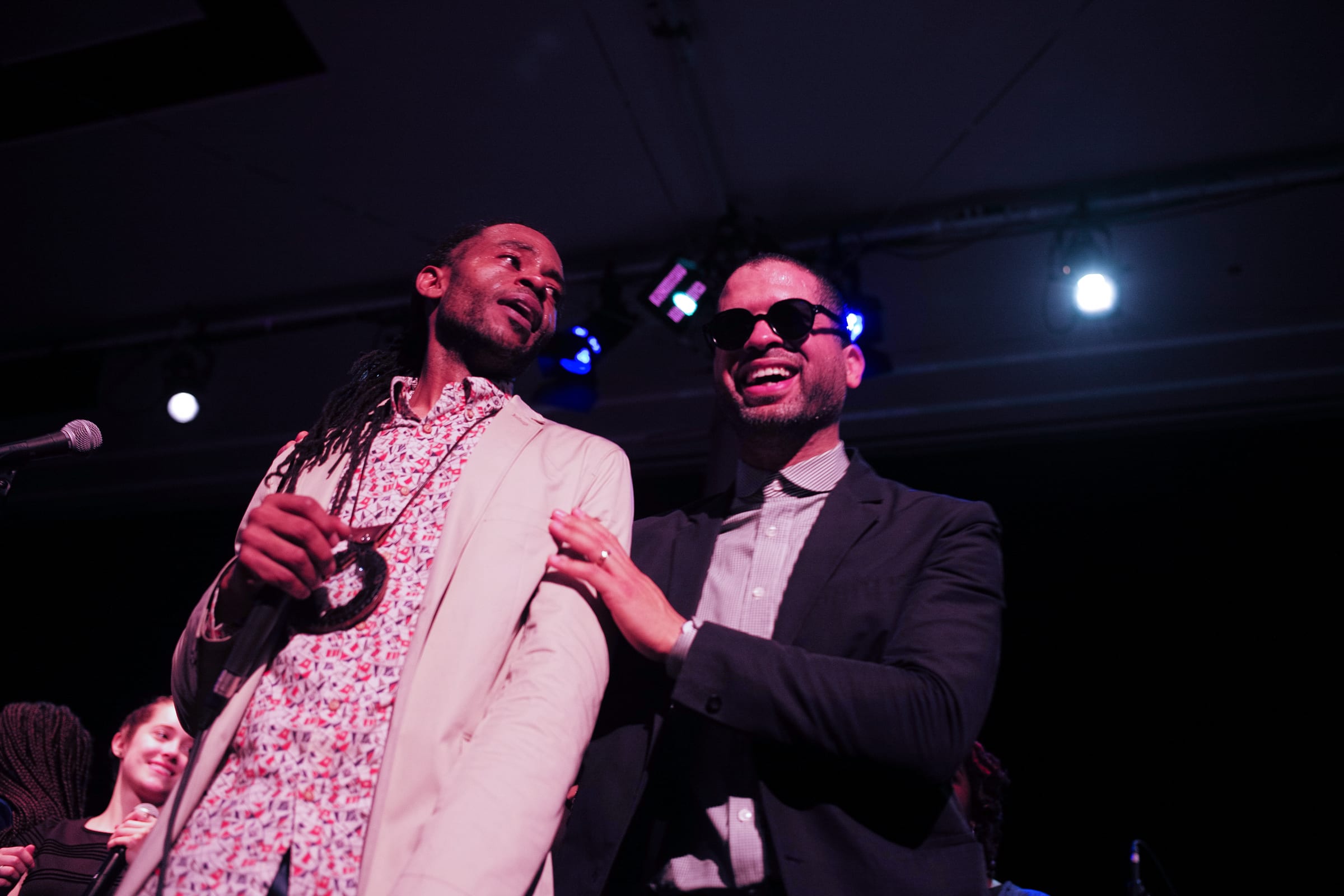
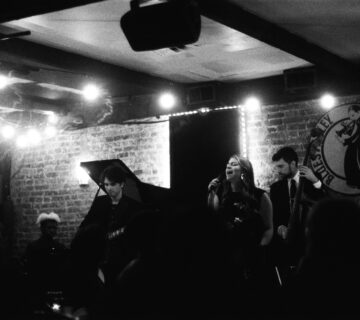
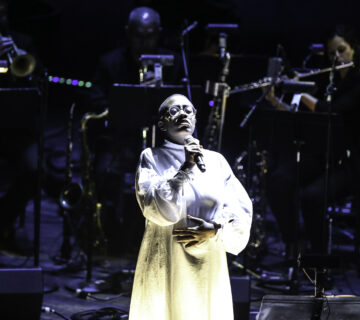
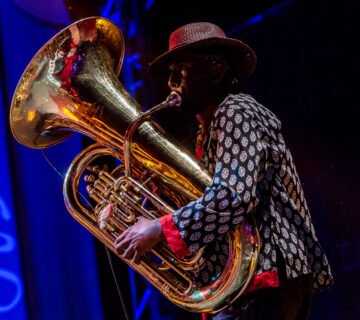
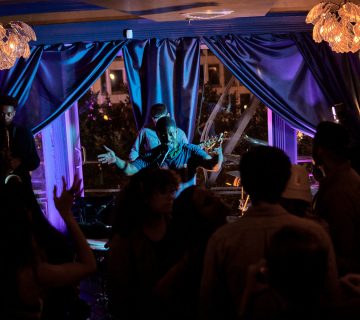
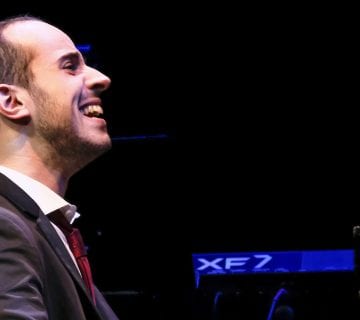
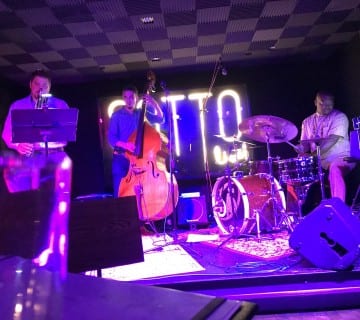
Join the Conversation →